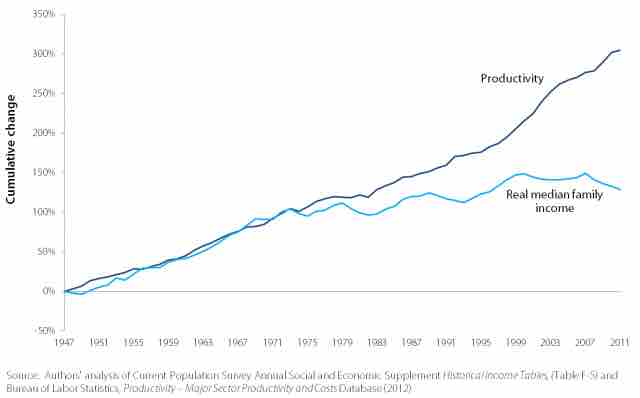While income inequality has risen among most developed countries, and especially English-speaking ones, it is highest in the United States. Income inequality in the United States has grown significantly since the early 1970s and has been the subject of study of many scholars and institutions.
Most of the income growth has been between the middle class and top earners, with the disparity becoming more extreme the further one goes up in the income distribution. A 2011 study by the Congressional Budget Office (CBO) found that the top earning 1% of households increased their income by about 275% after federal taxes and income transfers over a period between 1979 and 2007, compared to a gain of just under 40% for the 60% in the middle of America's income distribution. Scholars and others differ as to the causes, solutions, and the significance of the trend, which in 2011 helped ignite the "Occupy" protest movement. As a result, inequality has been described both as irrelevant in the face of economic opportunity (or social mobility) in America, and as a cause of the decline in that opportunity.
Yale professor and economist Robert J. Shiller, who was among three Americans who won the Nobel prize for economics in 2013, believes that rising economic inequality in the United States and other countries is "the most important problem that we are facing now today. "
Brief History of Income Disparity in America
The first era of inequality lasted roughly from the post-civil war era ("the Gilded Age") to sometime around 1937. But from about 1937 to 1947, a period that has been dubbed the "Great Compression," income inequality in America fell dramatically. Highly progressive New Deal taxation, the strengthening of unions, and regulation of the National War Labor Board during World War II raised the income of the poor and working class and lowered that of top earners. This "middle class society" characterized by a relatively low level of inequality remained fairly steady for about three decades ending in early 1970s. The return to high inequality or what has been referred as the "Great Divergence," began in the 1970s. It was caused mainly due to the widening gap between middle and top earners.
Recent History: Inequality on the Rise
The income growth of the average American family closely matched that of economic productivity until some time in the 1970s. However, while income began to stagnate, productivity continued to climb .

U.S. Income over time
Though productivity gains were primarily the basis for the increase in U.S. income, in more recent times, productivity increases have not been captured in income increases for the majority of U.S. families as noted in the graph.
In 2013, the Economic Policy Institute noted that even though corporate profits are at historic highs, the wage and benefit growth of the vast majority has stagnated. The fruits of overall growth have accrued disproportionately to the top 1%. According to PolitiFact and others, 400 Americans now own more than 50% of the net wealth of the United States.